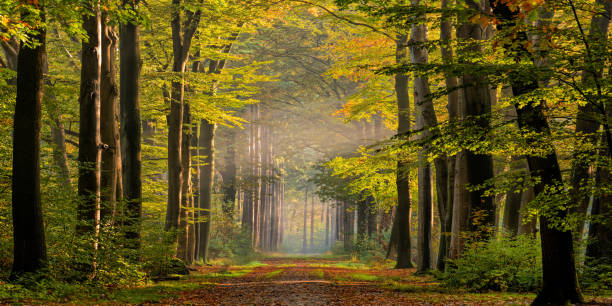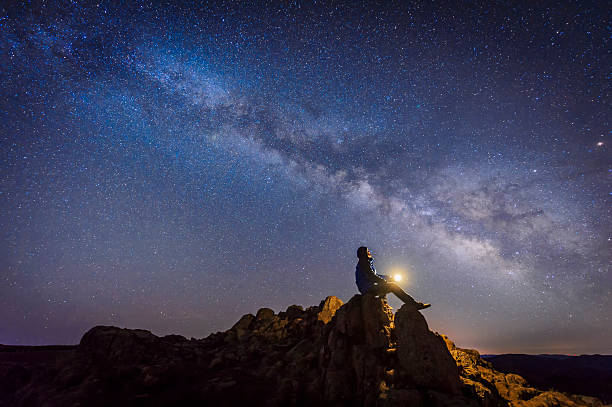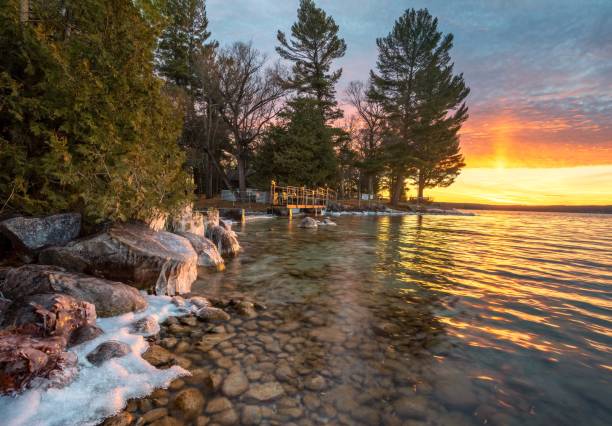How To Describe Summer Season In Writing (08 Best Steps)
How To Describe Summer Season In Writing
How To Describe Summer Season In Writing: The summer season is a symphony of warmth, a canvas painted with vibrant colors, and a chapter in the story of the year that beckons us to celebrate life in all its sun-soaked glory.
It’s a season that invites writers to wield their pens as paintbrushes, crafting descriptions that bring the sun’s caress, the laughter of children, and the fragrance of blooming flowers to life in the minds of their readers.
Describing summer in writing is an art, a pursuit that requires an adept use of words to convey the vivid emotions and sensory experiences that this season bestows upon us.
This guide delves into the techniques, nuances, and cultural variations of painting summer’s vivid portrait through the written word, embracing the power of language to evoke the spirit of a season where the world dances to the rhythm of the sun.
How To Describe Summer Season In Writing
To describe the summer season in writing, focus on vividly portraying the warmth, vibrant colors, and leisurely atmosphere that define this time of year. Here’s a step by step process on How To Describe Summer Season:
Weather
Mention the clear skies, intense sunlight, and rising temperatures. Describe the feeling of the sun’s warmth on your skin.
Nature
Emphasize the lushness of nature, with blooming flowers, green leaves, and vibrant landscapes. Mention the sounds of birds and insects.
Activities
Discuss the outdoor activities associated with summer, such as picnics, swimming, barbecues, and beach trips. Explain the joy of these activities and how they bring people together.
Clothing
Describe the change in wardrobe, with light, breathable clothing like shorts, sundresses, and flip-flops.
Food
Talk about seasonal fruits and vegetables, like watermelon, strawberries, and corn on the cob. Also, mention the ice cream and cold drinks that are so popular in the summer.
Aromas
Address the scent of freshly cut grass, flowers in bloom, and the unmistakable aroma of sunscreen.
Holidays and Festivals
If applicable, mention any summer holidays or festivals that are significant in your region. Describe the traditions and celebrations associated with them.
Leisure
Convey the idea of a relaxed, slower pace of life during summer, with longer days and a feeling of freedom.
Incorporate sensory details, emotions, and personal experiences to create a vivid and engaging portrayal of the summer season in your writing.

Understanding the Summer Season
Understanding the summer season is like sifting through a treasure chest of sensory riches. It’s a symphony of sunshine, a canvas painted with hues of endless blue, and a tantalizing fusion of nature’s fragrant masterpieces.
Summer is a fleeting love affair with warmth that dances on your skin, conjuring the irresistible aroma of barbecues, the hypnotic lull of crashing waves, and the jubilant laughter of children playing under the sun’s benevolent gaze.
It’s a season that urges you to taste life to the fullest, to dive headfirst into pools of adventure, and to pen tales of unforgettable escapades.
In the grand opera of the year, summer takes center stage, and understanding it is an art of capturing the purest essence of life’s vivacious chapters.
Seasonal characteristics
Seasonal characteristics define the very essence of the summer season. As the Earth tilts towards the sun, we’re enveloped in a warm embrace that ushers in clear skies and balmy breezes.
The weather takes on a celebratory note, with longer daylight hours and the sun casting its golden glow over landscapes.
Nature herself undergoes a miraculous transformation, adorning the world with vibrant blossoms, lush greenery, and a symphony of birdsong.
Meanwhile, human activities shift to the great outdoors, as beaches come alive with laughter, picnics are spread on emerald lawns, and the sizzle of barbecues fills the air.
These seasonal characteristics blend together to create an intoxicating elixir of joy and relaxation, making summer a time when life itself seems to be in full bloom.
Emotional and sensory experiences
The summer season unfurls a tapestry of emotional and sensory experiences that are nothing short of enchanting.
It’s a time of unbridled joy and relaxation, as the radiant sunbeams gently caress your skin, warming your soul. The air is filled with the fragrant symphony of blooming flowers, and the taste of succulent fruits and cool ice creams dances on your palate.
Visual beauty surrounds you, with sunsets painting the sky in a riot of oranges and pinks, while the shimmering ocean stretches to meet the horizon.
The resonant sound of children’s laughter and the soothing rhythm of ocean waves create an auditory backdrop that lulls you into a tranquil reverie.
Summer is a sensory banquet where every touch, sight, sound, taste, and smell conspire to create an unforgettable, multisensory journey through the most delightful season of the year.

Descriptive Writing Techniques
Descriptive writing techniques are the secret alchemy of wordsmiths, the magic spells that transform mere sentences into vivid, living tapestries of the imagination.
They’re the artist’s palette, where sensory imagery becomes an opulent brushstroke, painting the world with colors, sounds, scents, textures, and tastes.
Like a master illusionist, these techniques conjure sights so vivid you can feel the warmth of the sun on your skin, the laughter of children playing, the scent of wildflowers in the breeze, and the taste of an ice-cold, juicy watermelon.
They breathe life into the mundane, turning a simple summer day into a sensory symphony that resonates in the reader’s soul.
Descriptive writing techniques are the gateway to immersion, where the written word transcends mere information and becomes a transcendental experience that leaves you utterly spellbound.
Sensory Imagery
Sensory imagery in writing is the conduit to a world woven with the vibrant threads of human perception. It invites readers to not only visualize but to taste, touch, smell, and hear the words on the page.
Through sensory imagery, we can feel the golden warmth of the sun on our skin as if it were our own, hear the whisper of leaves in the wind, or savor the salty tang of sea air.
It’s the poetry of words, evoking the symphony of senses, transporting us from mere observation to full immersion.
Sensory imagery doesn’t just describe; it beckons us to step inside the narrative, to become one with the story’s rich tapestry, and to experience the world in a way that transcends the limits of mere sight and sound, making reading a sensory adventure.
Personification
Personification is the literary magic that bestows human qualities and characteristics upon the inanimate, the natural, and the abstract.
It breathes life into the lifeless, inviting readers to relate to the world in an entirely new way. It’s the wind that whispers secrets, the sun that smiles upon us, and the waves that embrace the shore with open arms.
Personification turns everyday elements into vibrant characters in the narrative, infusing stories with a sense of kinship, as if the world itself is speaking to us in a language we can understand.
Through personification, the world becomes a lively and relatable companion, transcending its physical form to convey deeper emotions, thoughts, and a unique form of storytelling that resonates with our human experience.
Seasons Within Summer
Within the grand theater of the summer season, there are captivating acts, each as distinct as chapters in a well-worn book.
Early summer, the prologue to this sun-soaked tale, ushers in the vibrant spirit of youth with its blooming flowers and glistening dew.
Midsummer takes center stage, a climactic crescendo of heat and growth, where the world is alive with boundless energy and adventure.
Then, as the season gracefully wanes, late summer approaches like a bittersweet epilogue, its golden days reminiscent of a fading sunset, and the harvest of memories ready for preservation.
These seasons within summer unfold as intricate narratives in a story written by the cosmos, each offering its own unique blend of emotions and experiences that we, as eager readers, savor with each turn of the seasonal page.

Early summer
Early summer, like the opening stanza of a sweet serenade, graces our world with a burst of life and energy. It is a time when nature awakens from its slumber, and the landscape is painted in hues of green and vibrant blooms.
The air carries the heady scent of freshly cut grass and the symphony of chirping birds, while the sun stretches its warm fingers across the earth.
In early summer, there is a palpable sense of anticipation and possibility in the air, as if the world itself is taking a deep, contented breath.
It’s a season of youthful exuberance, where the days grow longer, and every moment is an invitation to celebrate life in all its lush, unbridled beauty.
Early summer beckons us to shed the cocoon of spring and step into the full embrace of the sun’s affectionate warmth, promising a season filled with joy and endless adventures.
Midsummer
Midsummer, the zenith of the summer solstice, is a resplendent interlude when the world basks in the full glory of the sun’s fervent embrace.
During this peak season, the air shimmers with heat, and nature is a kaleidoscope of flourishing abundance. Fields sway with wildflowers, and the trees rustle with the secrets of ancient forests.
Days stretch languorously, inviting sun-kissed adventures and outdoor revelry, as families gather for picnics and friends head to the beach to savor the salty tang of the sea.
In the warm evenings, the sky hosts a mesmerizing dance of fireflies, and the world seems to hold its breath in the enchanting twilight.
Midsummer is a time when life flourishes at an exhilarating pace, and the world is a symphony of growth and vitality, making it the heart-pounding crescendo in the symphony of the summer season.
Regional and Cultural Variations
In the grand tapestry of summer, regional and cultural variations are the kaleidoscopic threads that infuse this beloved season with a rich and diverse spectrum of experiences.
From the tropical paradises where palm trees sway to the rhythm of the ocean’s lullaby, to the Mediterranean coastlines where ancient history collides with modern leisure, and even the Arctic circles where the midnight sun reigns supreme, each corner of the world dons its own unique summertime attire.
The cultural traditions, festivals, and celebrations that punctuate the season are like glittering jewels in a global crown, from the raucous beach parties of Rio de Janeiro’s Carnival to the serene and introspective Midsummer Eve celebrations in Scandinavia.
Regional and cultural variations are the vibrant brushstrokes that paint the world in a myriad of different summer colors, reminding us that while the season is universal, its beauty is woven from an intricate tapestry of diversity.
Different experiences around the world
Around the world, summer unfolds as a multi-faceted jewel, reflecting diverse experiences that capture the essence of each unique locale.
In tropical havens, the sun becomes an omnipresent companion, casting its relentless glow upon pristine beaches where azure waters beckon.
Mediterranean shores offer a more tempered, yet equally enchanting affair, with historic towns perched on cliffs overlooking the sparkling sea.
In the Arctic, summer brings an extraordinary spectacle of the midnight sun, illuminating landscapes of unparalleled beauty.
Across continents, cultural festivities come alive, from the boisterous street carnivals of Latin America to the tranquil solstice celebrations in Northern Europe.
Each corner of the globe shares its own interpretation of summer’s splendor, weaving a global narrative that reminds us of the wondrous kaleidoscope of human experiences during this cherished season.
Cultural festivals and traditions
Cultural festivals and traditions are the vibrant heartbeats of our shared human tapestry, each a unique chapter that tells the story of a community’s values, beliefs, and heritage.
Summer is a time when these traditions come to life with a burst of color, music, and meaning.
Whether it’s the mesmerizing rhythms of samba echoing through the streets of Rio de Janeiro during Carnival, the enchanting dances of the Obon Festival in Japan that honor ancestors, or the colorful bonfires and flower crowns of Sweden’s Midsummer celebrations, these cultural events serve as a collective memory and a source of pride.
They bring communities together in a symphony of dance, song, and feasts, offering a window into the past and a vision of the future. Cultural festivals and traditions enrich the global mosaic of experiences, reminding us of the beauty and diversity of our shared human story.
The Passage of Time
The passage of time is the elusive river upon which we all embark, a journey marked by the ever-turning pages of the calendar.
In the context of summer, time takes on a magical quality, as it slips through our fingers like grains of sand. Each day, each sunlit hour, becomes a precious gem in the necklace of our memories.
As we revel in the warmth, the laughter, and the adventures that define this season, we become acutely aware of its fleeting nature.
It’s a poignant reminder that life’s tapestry is woven from moments, and summer, with its transient splendor, serves as a timeless reminder that our most cherished experiences are often the most ephemeral.
Yet, as the season yields to autumn, it leaves behind an indelible mark on our hearts, promising that the cycle of life will bring another summer, and with it, another chance to savor the joy of existence.
Reflection on the fleeting nature of summer
Reflection on the fleeting nature of summer is like gazing into a mirror that captures the ephemeral beauty of life itself.
As the season unfurls its vibrant tapestry, we are both entranced and sobered by the knowledge that this momentary enchantment will soon be relegated to memory.
The sunlit days and balmy nights, the laughter and adventures, all drift away like grains of sand carried by the wind.
Yet, in the reflection of summer’s impermanence, we find a profound lesson. It teaches us the value of seizing the present, of savoring each moment, and of embracing the warmth and joy of the here and now.
It urges us to make the most of the fleeting seasons of our lives, to cherish the memories they offer, and to recognize that even in their evanescent nature, they leave behind a legacy of sunsets painted in our hearts.

Nostalgia and memories
Nostalgia and memories are the twin lanterns that illuminate the pathways of our past, casting a warm and sentimental glow on the stories of our lives.
Nostalgia is the sweet melancholy that washes over us, like the embrace of an old friend, as we revisit moments that have slipped through the fingers of time.
Memories are the fragments of our existence, like a mosaic of emotions and experiences, each piece holding a story of its own.
Both nostalgia and memories are the keys to our personal time machines, capable of transporting us to moments of laughter, tears, and profound meaning.
They anchor us to our roots, reminding us of who we were, who we’ve become, and the beautiful tapestry of life that connects us to the people and places we’ve known.
Together, they are the essence of our humanity, reminding us that, in the grand symphony of existence, it is the echoes of our past that create the music of our present and future.
Frequently Asked Questions about How To Describe Summer Season In Writing
What is the purpose of describing the summer season in writing?
The purpose of describing the summer season in writing is to evoke vivid imagery and create a sensory experience for readers. It helps set the scene, convey emotions, and immerse the audience in the atmosphere of summer.
What elements should I focus on when describing the summer season?
When describing the summer season, focus on the weather, nature, activities, clothing, food, aromas, holidays or festivals, and the leisurely pace of life that characterizes this season.
How can I make my description of summer more engaging and relatable?
To make your description engaging and relatable, use sensory details to create a multisensory experience for the reader. Share personal anecdotes or memories related to summer to evoke emotions and connections.
Are there any specific literary devices or techniques I should use when describing summer in writing?
You can use various literary devices such as similes, metaphors, personification, and onomatopoeia to add depth and creativity to your description. Additionally, employ figurative language and descriptive adjectives to paint a vivid picture.
What are some common mistakes to avoid when describing the summer season in writing?
Avoid clichés and overused descriptions. Instead, strive for originality and authenticity. Also, be mindful of balance; don’t overwhelm your readers with excessive details or descriptions.
Can I use my personal experiences and memories in my summer descriptions?
Absolutely! Incorporating personal experiences and memories can make your writing more authentic and relatable. It adds a unique perspective and emotional depth to your descriptions.
How can I capture the essence of summer in a short piece of writing, such as a poem or a short story?
In shorter pieces, focus on the most striking and essential elements of summer. Use concise, evocative language and powerful imagery to convey the feeling of the season within a limited word count.
Should I consider the cultural or regional aspects of summer when describing it in writing?
Yes, considering cultural and regional aspects can add richness to your description. Different cultures and regions may have unique traditions, holidays, and symbols associated with summer that you can incorporate into your writing.
Can I blend the positive and negative aspects of summer in my description?
Yes, you can create a well-rounded description by including both the positive and challenging aspects of summer. This can provide a more realistic and relatable portrayal of the season.
Are there any recommended resources or examples I can refer to for inspiration in describing the summer season in writing?
You can read works of literature, poems, and essays that beautifully describe summer to gain inspiration. Additionally, observing nature and people during the summer season can provide firsthand inspiration for your writing.
Conclusion:
In the conclusion of How To Describe Summer Season In Writing, capturing the essence of the summer season is like weaving a tapestry of sensory delights and emotional resonance.
The art of describing summer in writing is not merely an exercise in painting picturesque landscapes with words, but a powerful means of inviting readers to step into the radiant world of the season.
From sensory imagery that evokes the feel of sun-warmed sand to the personification that turns nature into a character in its own right, the techniques explored in this guide offer the keys to unlocking the boundless creativity of storytelling.
The seasons within summer, regional and cultural variations, and the passage of time add layers of depth and complexity to the canvas, enriching the narrative with cultural diversity and human experience.
Ultimately, the journey to describe the summer season in writing is a quest to infuse words with the vivid vibrancy of the season itself, reminding us of the magic that lies in the simple act of turning words into a world where readers can bask in the sun’s warmth and dance with the breeze on a hot summer day.






